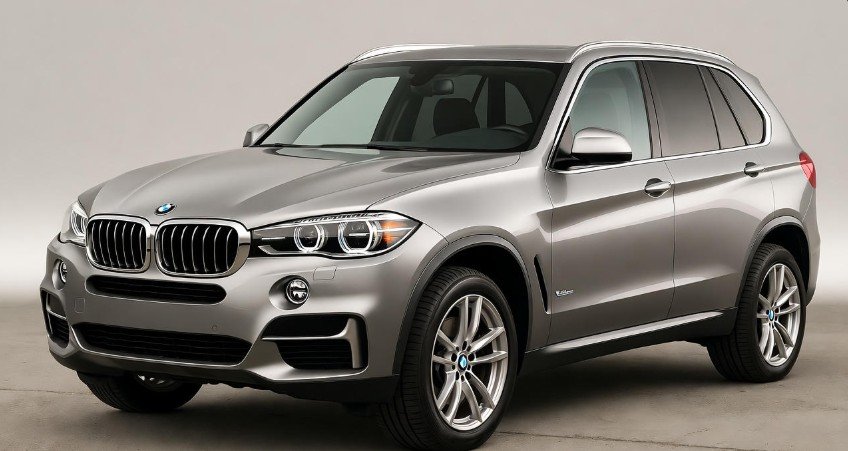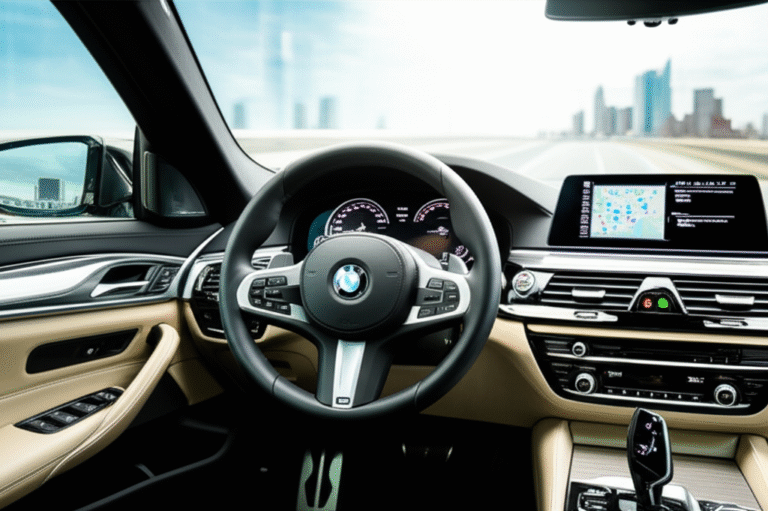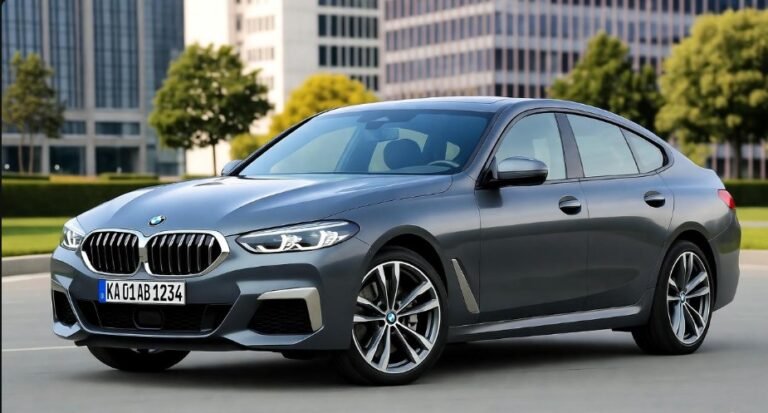BMW X5 Fuel Tank Capacity: 6 Specs

The BMW X5 fuel tank capacity typically ranges from 15.9 to 21.9 gallons, a crucial spec for understanding your driving range and refueling needs. Knowing your specific X5 model’s tank size ensures efficient travel and planning.
Key Takeaways
- Discover BMW X5 fuel tank capacities across generations.
- Understand how tank size impacts your driving range.
- Learn to find your X5’s exact fuel tank capacity.
- Explore factors affecting fuel efficiency.
- Get tips for maximizing your driving distance.
- See what other fuel-related specs matter.
Dreaming of the open road in your BMW X5? That powerful, luxurious SUV is built for adventure, but every journey, whether a daily commute or a cross-country road trip, starts with understanding the basics. One of the most fundamental, yet often overlooked, aspects is your vehicle’s fuel tank capacity. Knowing precisely how much fuel your BMW X5 can hold is key to planning your stops, estimating your driving range, and ultimately, enjoying your drive with peace of mind. It might seem like a simple number, but it unlocks a wealth of information about your vehicle’s capabilities. Let’s dive into the specifics of the BMW X5 fuel tank capacity and what those numbers mean for you.
BMW X5 Fuel Tank Capacity: A Comprehensive Look

The BMW X5, a flagship Sports Activity Vehicle (SAV), is known for its blend of performance, luxury, and utility. When it comes to its fuel tank, BMW has offered different capacities across its various generations and model years to cater to diverse driving needs. Understanding these specifications is crucial for planning longer trips, managing your fuel costs, and simply knowing your vehicle inside and out. For drivers in the USA, where long distances are common, this information is particularly valuable.
This guide will break down the BMW X5 fuel tank capacity, exploring the variations you might encounter and providing you with all the essential specifications to help you drive smarter and more confidently.
Understanding BMW X5 Fuel Tank Size Variations
The fuel tank capacity of a BMW X5 isn’t a one-size-fits-all number. It has evolved over the years, with different generations and even specific trims or optional packages influencing the exact gallon count. BMW engineers these differences to balance vehicle weight, interior space, and the desired driving range for different models. For U.S. drivers, this means that whether you own a first-generation model or the latest iteration, the capacity might differ.
It’s important to consult your owner’s manual or specific vehicle information for the most accurate data for your exact X5. However, we can look at the general ranges provided by BMW across its popular models.
Generations and Their Fuel Tank Capacities
BMW X5 models have been around for over two decades, and with each redesign, fuel tank capacities have been refined. Here’s a look at how the capacity has generally trended across the main generations:
E53 (First Generation: 1999-2006)
The original X5, released in 1999, aimed to set a new standard for luxury SUVs. Its fuel tank capacity was designed to support its role as a versatile vehicle, capable of both daily driving and longer excursions. For most E53 models, the fuel tank capacity is around 18.5 gallons (approximately 70 liters).
E70 (Second Generation: 2006-2013)
The second generation brought significant updates to the X5, including enhanced technology and engine options. To accommodate these advancements and potentially offer a greater driving range, the E70 generation often featured a fuel tank capacity of approximately 17.7 gallons (about 67 liters). Some variations might exist depending on specific market configurations or optional equipment.
F15 (Third Generation: 2013-2018)
Building on the success of its predecessors, the F15 generation of the BMW X5 continued to impress with its elegant design and robust performance. The fuel tank capacity for this generation is typically around 19.1 gallons (approximately 72 liters). This increase aims to provide a better balance between vehicle weight and the convenience of fewer refueling stops.
G05 (Fourth Generation: 2018-Present)
The current, fourth generation of the BMW X5 (G05) represents the pinnacle of BMW’s SAV engineering. It offers a more spacious interior, advanced technology, and potent powertrains. For the G05 generation, BMW generally equips it with a larger fuel tank to match its extended capabilities and potential for longer journeys. The standard fuel tank capacity is usually 21.1 gallons (approximately 80 liters). However, some models, particularly those with specific powertrain options or performance packages, might come with an optional larger tank of 21.9 gallons (approximately 83 liters), offering the maximum range for this generation.
BMW X5 Fuel Tank Capacity: Key Specifications Table
To provide a clear overview, here’s a table summarizing the typical fuel tank capacities for different BMW X5 generations. Remember, these are general figures, and your specific vehicle might have slight variations.
| Generation | Model Years | Typical Fuel Tank Capacity (US Gallons) | Approximate Fuel Tank Capacity (Liters) |
|---|---|---|---|
| E53 | 1999-2006 | 18.5 gallons | 70 liters |
| E70 | 2006-2013 | 17.7 gallons | 67 liters |
| F15 | 2013-2018 | 19.1 gallons | 72 liters |
| G05 | 2018-Present | 21.1 gallons (Standard) 21.9 gallons (Optional) |
80 liters (Standard) 83 liters (Optional) |
The Impact of Fuel Tank Capacity on Driving Range
The size of your BMW X5’s fuel tank is directly related to how far you can drive on a single fill-up. This is often referred to as your vehicle’s driving range. The formula is straightforward: Driving Range = Fuel Tank Capacity × Fuel Economy (MPG).
For example, if your X5 has a 21.1-gallon tank and achieves 20 MPG, your theoretical maximum range would be 422 miles (21.1 gallons × 20 MPG). However, this is a theoretical maximum. In reality, your driving range will be influenced by several factors.
A larger fuel tank capacity, like those found in the newer G05 models, offers the potential for a longer driving range. This is especially beneficial for those who frequently undertake long road trips across the vast landscapes of the USA or for professionals who cover significant distances in their work. It means fewer stops at the gas station, saving you time and hassle.
How to Find Your BMW X5’s Exact Fuel Tank Capacity
While the tables above provide a general guide, it’s always best to know the precise fuel tank capacity for your specific BMW X5. Here are the most reliable ways to find this information:
1. Consult Your Owner’s Manual
Your BMW X5 owner’s manual is the definitive source for all technical specifications, including the fuel tank capacity. Look in the sections related to technical data, specifications, or fuel. If you no longer have a physical copy, most manufacturers, including BMW, offer PDF versions that can be downloaded from their official websites.
2. Check the Fuel Filler Door or Cap
Sometimes, crucial information like fuel type and capacity is printed on a sticker near the fuel filler cap or inside the fuel filler door. While not always present, it’s worth a quick look.
3. Look Up Your Vehicle’s VIN
You can use online VIN decoders or BMW’s official website to input your vehicle’s Vehicle Identification Number (VIN). This will provide a detailed breakdown of your car’s original specifications, including the fuel tank size.
4. Use Online Automotive Databases
Reputable automotive websites and databases often list detailed specifications for all makes and models. Searching for your specific X5 year and trim level will usually yield the exact fuel tank capacity. For instance, resources like Edmunds or Kelley Blue Book (KBB) are excellent for this.
5. Contact a BMW Dealership or Specialist
If you’re still unsure, your local BMW dealership or a trusted BMW specialist mechanic can easily look up the exact specifications for your vehicle based on its VIN or model details.
Factors Affecting Fuel Efficiency and Range
Knowing your fuel tank capacity is only half the story when it comes to your driving range. Your BMW X5’s fuel efficiency (measured in miles per gallon or MPG) plays an equally critical role. Several factors can influence how much fuel you consume:
- Driving Habits: Aggressive acceleration and hard braking consume significantly more fuel than smooth, consistent driving.
- Speed: Fuel efficiency generally decreases at higher speeds. Driving at or below the posted speed limits on highways helps maximize MPG.
- Terrain: Driving uphill requires more energy and thus more fuel than driving on flat surfaces.
- Vehicle Load: A heavier vehicle requires more effort to move, leading to increased fuel consumption. This includes passengers and cargo.
- Tire Pressure: Underinflated tires increase rolling resistance, making the engine work harder and reducing MPG. Proper tire inflation is crucial for both safety and efficiency, as recommended by organizations like the National Highway Traffic Safety Administration (NHTSA).
- Weather Conditions: Cold weather can decrease fuel efficiency. Using the air conditioning or heating system also adds to the engine’s workload.
- Engine Maintenance: A well-maintained engine with clean filters and properly functioning spark plugs will operate more efficiently.
- Aerodynamics: External accessories like roof racks can increase aerodynamic drag, reducing fuel efficiency.
Pro Tips: Maximizing Your BMW X5’s Driving Range
Pro Tip: When planning a long trip, ensure your tires are properly inflated to the manufacturer’s recommended pressure. Check this before you depart and periodically during your journey, especially with significant temperature changes.
Maximizing your driving range allows for more flexibility and fewer interruptions. Here are some practical tips:
- Drive Smoothly: Avoid rapid acceleration and sudden braking. Anticipate traffic flow to maintain a steady speed.
- Maintain Optimal Speed: On highways, experiment with slightly lower speeds. Often, a few MPH less can yield noticeable MPG gains.
- Reduce Idling: If you’re stopped for more than a minute, it’s often more fuel-efficient to turn off the engine and restart it when you’re ready to go.
- Proper Tire Inflation: As mentioned, keeping your tires properly inflated is a simple yet effective way to improve MPG.
- Minimize Weight: Remove any unnecessary heavy items from your X5 before long trips.
- Plan Your Route: Use navigation apps that can help optimize your route for fuel efficiency, avoiding excessive hills or stop-and-go traffic where possible.
- Regular Maintenance: Keep up with your BMW’s scheduled maintenance. A tune-up can ensure your engine is running at peak efficiency.
Beyond Capacity: Other Important Fuel-Related Specs
While fuel tank capacity is vital, other fuel-related specifications are also important for your BMW X5:
Fuel Type
Most BMW X5 models, especially those with a focus on performance, require premium unleaded gasoline. Using the recommended fuel type ensures optimal engine performance and longevity. Always refer to your owner’s manual for the exact octane rating and fuel specifications. For example, the manual might state “Premium Unleaded Gasoline, 91 octane or higher recommended.”
Fuel Economy (MPG)
This is perhaps the most cited fuel-related statistic. It tells you how many miles your X5 can travel per gallon of fuel. MPG varies significantly based on the engine, drivetrain (RWD vs. AWD), and driving conditions (city vs. highway). Official EPA estimates are a good starting point for understanding expected fuel economy.
Low Fuel Warning Light
Understanding when your low fuel light comes on is also useful. Typically, this light illuminates when you have approximately 1.5 to 2 gallons of fuel remaining in the tank. This gives you a buffer to find a gas station, but it’s best not to let it get this low regularly, as it can sometimes churn sediment from the bottom of the tank into the fuel system.
Fuel Pump Location and Operation
The fuel pump is an essential component responsible for delivering fuel from the tank to the engine. It’s usually located inside the fuel tank. While not something a driver needs to interact with daily, understanding its function is part of overall vehicle knowledge. Issues with the fuel pump can lead to starting problems or stalling.
Fuel Filter
The fuel filter removes impurities from the gasoline before it reaches the engine. It’s a critical maintenance item. Clogged fuel filters can restrict fuel flow, leading to decreased performance and potential engine damage. Your X5’s maintenance schedule will indicate when the fuel filter should be inspected or replaced.
Frequently Asked Questions (FAQ)
Q1: What is the average fuel tank capacity for a BMW X5?
The average fuel tank capacity for a BMW X5 generally falls between 17.7 and 21.9 gallons, depending on the specific generation and model year.
Q2: Do all BMW X5 models have the same fuel tank size?
No, BMW X5 models have different fuel tank sizes across various generations and sometimes even within the same generation due to different engine options or optional packages.
Q3: How many miles can I expect to drive on a full tank of gas in a BMW X5?
This depends on your X5’s fuel tank capacity and its miles per gallon (MPG). A typical X5 with a 20-gallon tank and 20 MPG could theoretically travel around 400 miles. However, real-world range varies based on driving conditions.
Q4: Can I put regular unleaded gas in my BMW X5 if it recommends premium?
While your BMW X5 might run on regular unleaded gas, it is not recommended. Using the manufacturer-specified premium fuel ensures optimal engine performance, efficiency, and prevents potential long-term damage to the engine’s sensitive components.
Q5: How do I know when my BMW X5’s low fuel light turns on?
Your BMW X5 will have a dashboard indicator light that illuminates when the fuel level is critically low, typically signaling about 1.5 to 2 gallons of fuel remaining. Consult your owner’s manual for the exact symbol.
Q6: Is a larger fuel tank capacity always better?
A larger fuel tank offers a greater driving range, which is convenient for long trips. However, it also adds weight to the vehicle, which can slightly impact fuel efficiency. For most drivers, the convenience of a larger tank, especially in newer models like the G05, outweighs any minor efficiency trade-offs.
Q7: Where can I find the official fuel capacity specification for my specific BMW X5 year and model?
The most reliable places to find your BMW X5’s exact fuel capacity are your owner’s manual, a sticker inside the fuel filler door, or by using your vehicle’s VIN on BMW’s official website or a reputable online automotive database.
Conclusion
Understanding your BMW X5’s fuel tank capacity is a fundamental aspect of ownership, directly influencing your driving range and refueling strategy. As we’ve explored, this specification has evolved across generations, with newer models like the G05 offering larger capacities to support their advanced capabilities and appeal to drivers who cover more ground. By knowing your specific X5’s capacity, consulting your owner’s manual, and considering factors that affect fuel efficiency, you can drive smarter, plan your journeys with confidence, and truly experience the luxury and performance that the BMW X5 is renowned for. Whether you’re navigating the highways of America or exploring local routes, a little knowledge goes a long way in making every drive more enjoyable and efficient.


